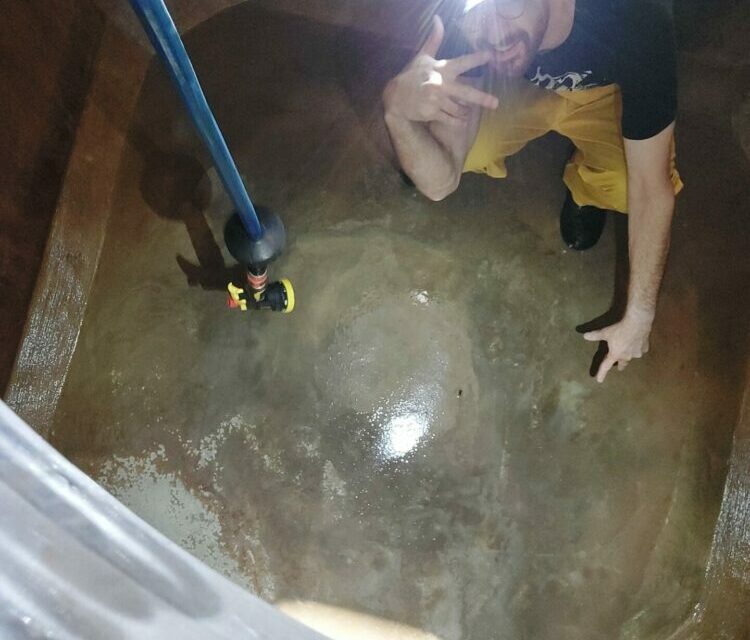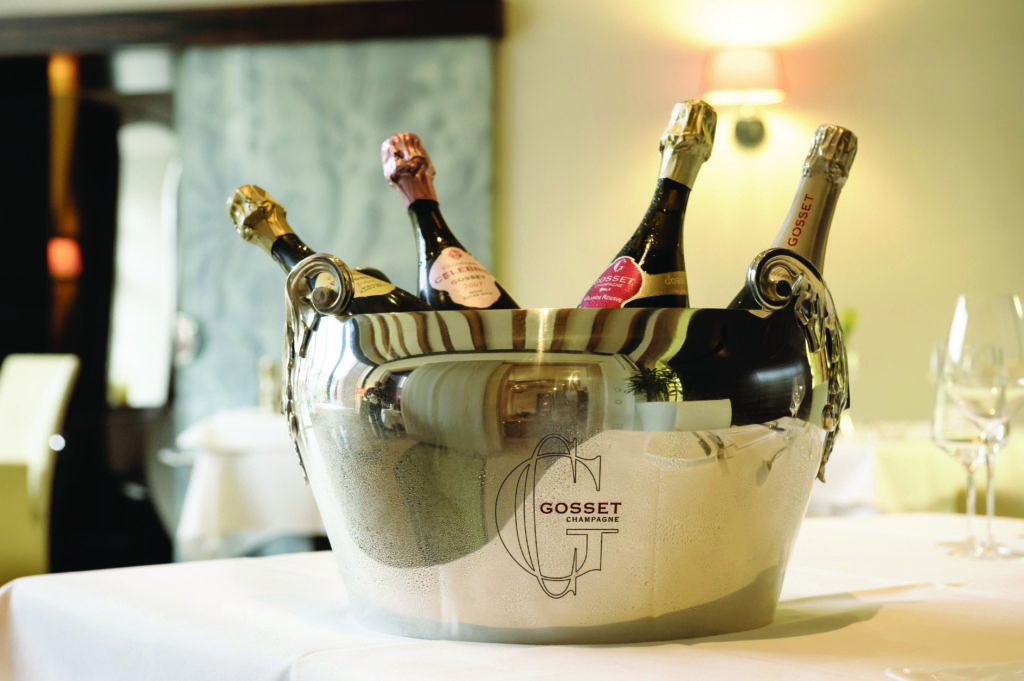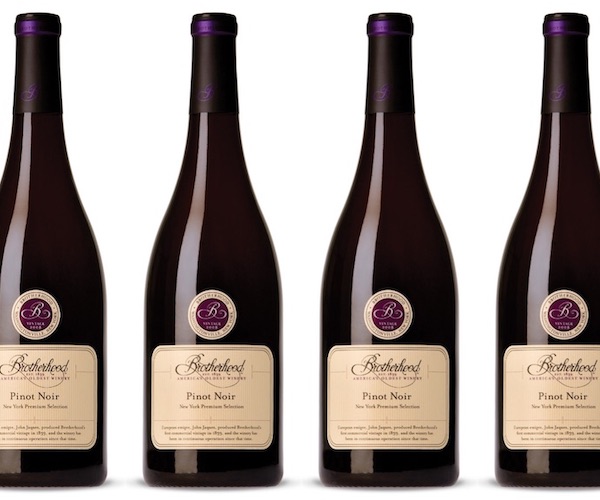After two years of scrubbing, punching down, pumping over, drinking from, and talking about concrete wine vessels (see me, pictured above), I feel outright obligated to write this article.
In the span of the last decade, concrete has evolved from historic to modern, with many winemakers in the new world and beyond utilizing concrete as a definitive part of their style. I find wines made in concrete to be incredibly compelling, and I’ll often seek them out intentionally. In this, I am often alone. Many of my discussions with customers in the winery tasting room went something like, “Wait, did you just say concrete? Like…the sidewalk?”. Cue mental eye-roll and a well-practiced explanation.
The idea of fermenting in stone or clay is as old as wine itself and an integral part of cellars in Bordeaux, Beaujolais, and Argentina, just to name a few. In the past 30 odd years, the new world has taken to experimenting with concrete, amphora, and all kinds of vessels. Now, in 2024, we’re well enough past the point of “wait and see” to finally draw some conclusions about whether or not concrete was a worthy investment.
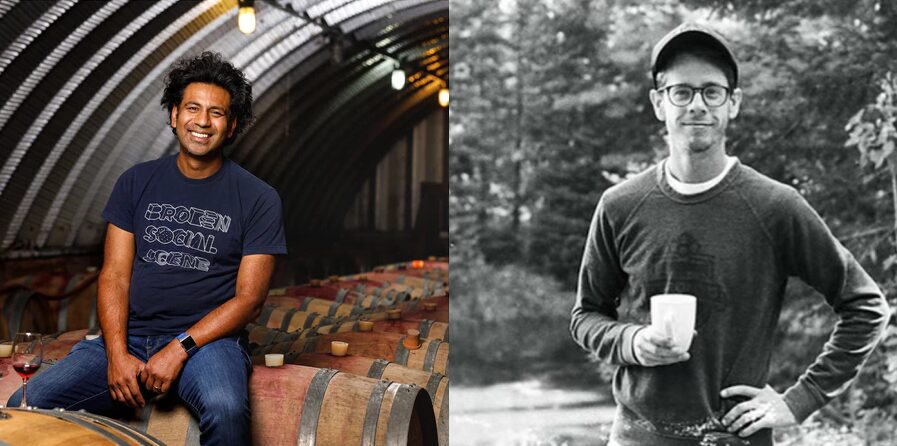
Pictured: Shiraz Mottiar (left), Chris Thompson (right)
To explore the current state of concrete in Ontario, I’ve reached out to winemaker Shiraz Mottiar from Malivoire, and Lighthall/Legal Smile winemaker Chris Thompson, who took me under his very patient wing for the two years I worked with him. Lighthall has employed square Nomblot concrete tanks since the late 2000’s, and Malivoire has had their own custom made concrete tanks since 2016, which Jamie interviewed them about shortly after, check it out HERE.
Concrete fermenters are accompanied by a whole crowd of myths and half-truths about their qualities, but their most obvious and objective character makes them more relevant today than ever. Temperature control. Shiraz explains
“There are no fermentation heat spikes, and in general, the ferments stay cooler, maintaining fresh fruit characteristics with tense energy – not soft and silky.“
A longer ferment can also mean more extraction, more time to punch down or pump over, and often a more reliable fermentation. Concrete’s impact go beyond just a good fermentation, as Chris points out
“In terms of ageing, they provide a wonderful and rich mouthfeel and textural component that oak gives as well, but without the toasting and flavour influence you’ll get from barrels. It leaves the wines more soft and well-rounded while keeping the palate fairly clean. That said, from a flavour influence stand point, it does seem to amplify a certain edge of reductivity in white wines that show it already naturally. That effect in turn might cause other decisions in the cellar in regards to lees aging or battonage depending on the style the winemaker is seeking to achieve.”
Concrete’s porous nature allows for some unique interactions with oxygen that make it very suitable for conditioning wines.
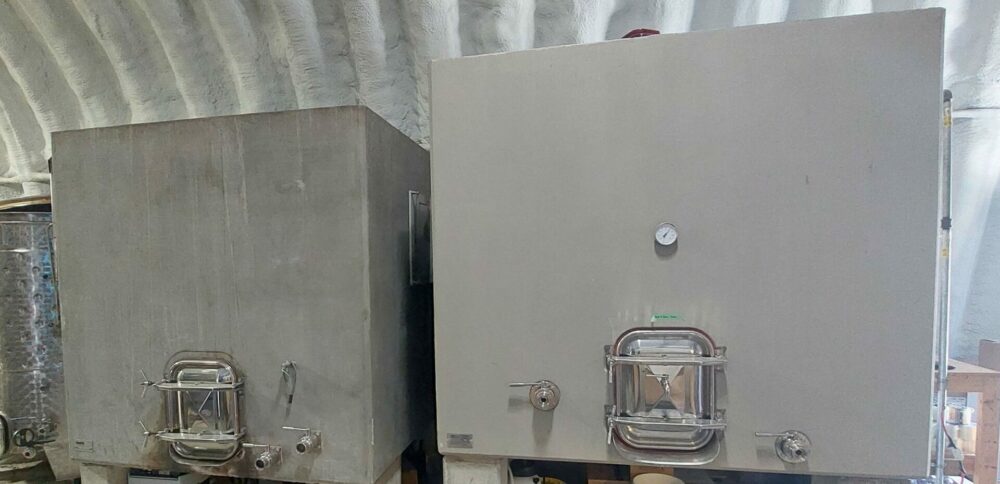
Lighthall’s sibling tanks are Hank (left, open top) and Frank (right, closed top). If I recall, Frank was still conditioning Lighthall’s 2022 Chardonnay at the exact time of this picture.
A devil’s advocate asks, if concrete is so great, why did it fade into near obscurity?
A lot of it comes down to the economic shifts of the wine industry. The advancement of (relatively) cheap stainless steel tanks with cooled jackets and massive capacities was the logical choice, especially for winemakers with older, damaged concrete tanks. Concrete can live long and prosper, if cared for, but as I’m sure we all know, what can go wrong… Rather than painstakingly repairing old damaged tanks or replacing and repouring new ones, moving to stainless steel was the right move in a business with margins as thin as winemaking’s.
Compared to a 58HL Nomblot concrete tank, a similar sized, high quality stainless steel tank (which includes a cooling jacket), the steel runs about $5k cheaper on average. You can go hog wild on stainless steel, and it’ll take a tremendous amount of abuse over decades of winemaking, but concrete is extremely particular. It cannot be cleaned with hot water, it can be chipped if you’re careless, eroded, and stained rather easily. When I cleaned concrete, I took a lot of care in how I washed and scrubbed the tanks. For all that pain in the ass, if these things didn’t make a real difference, producers would not be still investing in them. In fact, Shiraz and many others, are preparing to double down on their commitment to concrete.
“We are actually looking to replace our oak tanks as they have reached their expected life (20years) and as they are open top for just red ferment, they now require too much water for pre-harvest re-hydration to be sustainable. The current concrete tanks we have are outside and are also open top, just for red ferment, so it would be great to get some that we can age white wines in too.”
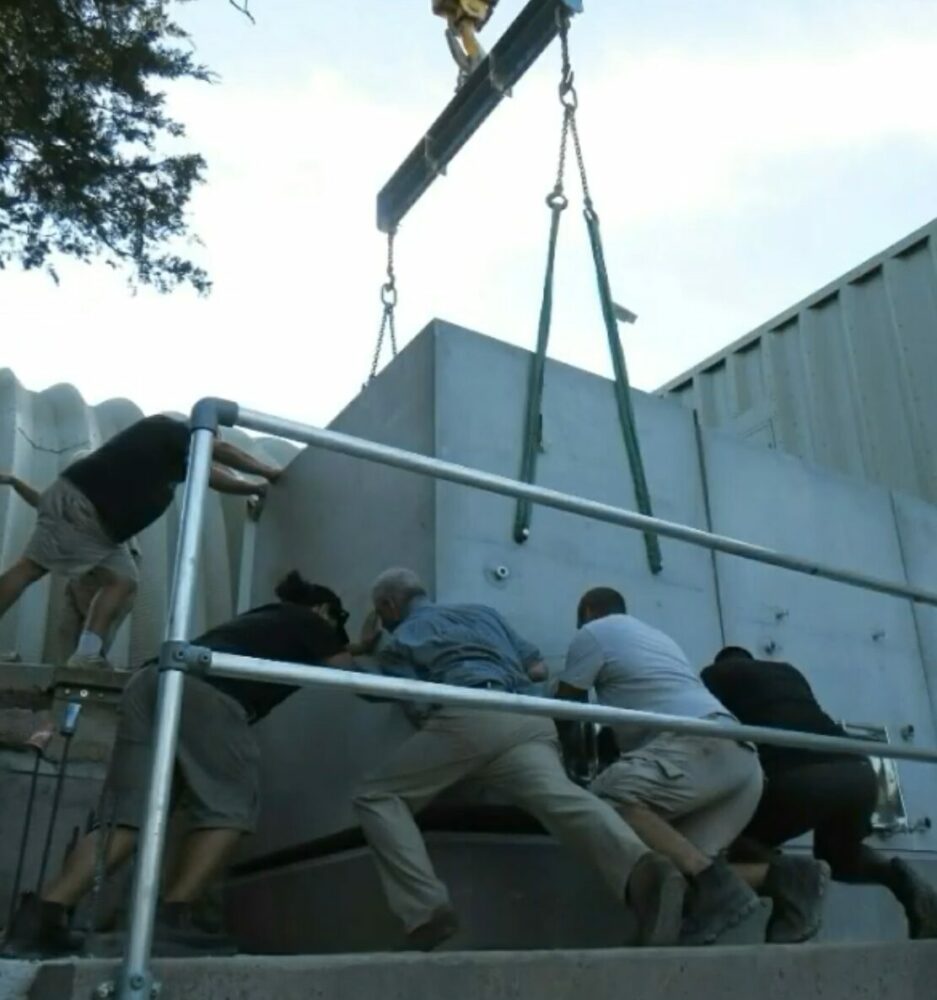
Malivoire on the day of installation. You better be damn sure you’re happy with the placement of your tanks, because they don’t move around easy.
Despite the difficulties of production, and the praise of wine pros, most consumers still aren’t aware of concrete winemaking. However, both Chris and Shiraz share the sentiment that they often find their way to them incidentally. Chris writes:
“I wouldn’t say there’s a direct or conscious demand for them at the moment, however I would say there is an increasing demand for unoaked wines. Additionally, other people seem interested in them due to their uniqueness, edginess, or just due to the fact that they are fun and little different. That said the customers that we’ve had who have gotten to know and enjoy the wines in concrete generally are coming back to find more of it. ”
This is the key part. I had a realization whilst writing this article. My starting concept was, “why don’t people care/know about concrete winemaking?” when, in reality, it doesn’t matter. The interests of both winemakers and consumers are intersecting, with concrete in the middle. Concrete wines are only bound to get better and better, and quality is king.
But like anything else, there’s still so much we don’t know. When I asked Chris and Shiraz about the unknowns they’d like answered, both had a lot of insight. Chris writes:
“I’d be curious what larger proportions of limestone, chalk, etc. might have as an impact, if any. Not necessarily for a direct flavour impact, but perhaps one of temperature, alkalinity, or extraction. (Also) if there were tests per grape variety that were done the exact same but in different vessels (steel vs. oak vs. concrete) that could measure everything to how it affected things like speed of malolactic fermentation, sulphur-based compounds, protein stability, pH, thiol production, VA, etc, that data as a starting point would help direct a style choice before going through all the the time and energy that goes into a bench trial.”
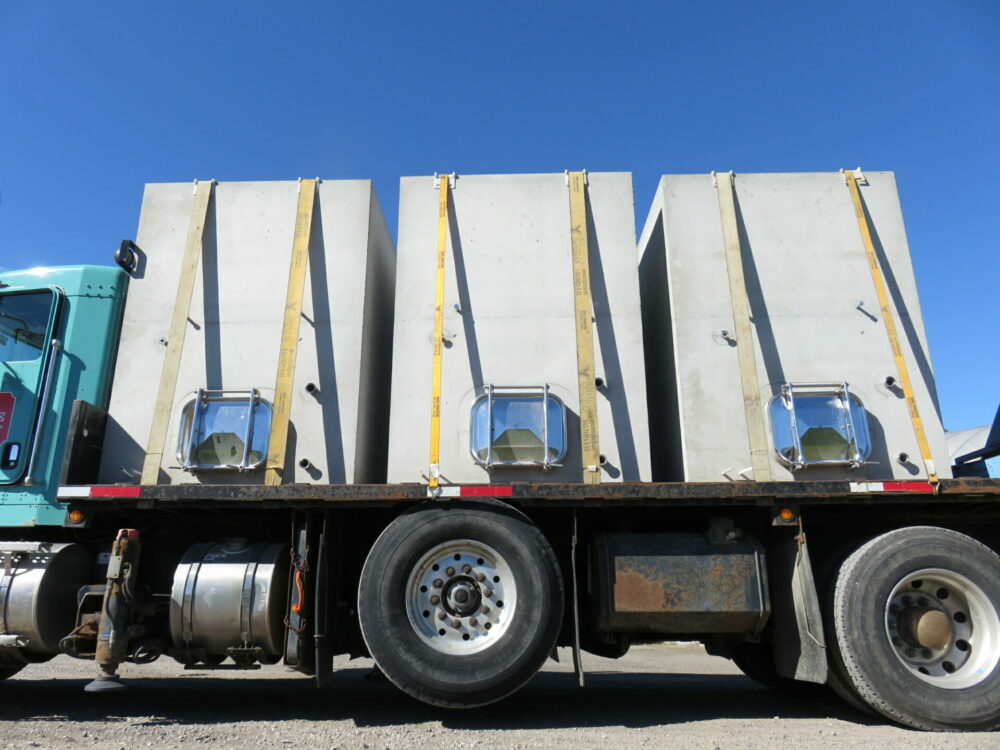
Malivoire’s custom, locally produced tanks made from Niagara limestone. Now that’s terrior!
Shriaz brings up something I find is often ignored: tank linings.
“I would love to find research, or do it for different levels of lining of concrete tanks. The one exciting thing about our tanks is that they are not lined with anything on the inside, so the wine is in direct contact with the concrete, which could be risky with potential chemical reactions. Other regions where traditional concrete tanks are used, they could be epoxy coated, lined with glass tiles, sealed with beeswax, or other materials. I tried beeswax, but I didn’t have a control tank to compare. And once you clean the tank after emptying, the wax was gone too.”
Hopefully, with the adoption of tanks all over, especially in places where the pockets are deep enough to actually conduct such research (*cough* Napa *cough* ), concrete can only get better.
My obvious fanaticism aside, concrete is a tool in the winemaker’s arsenal. Chris sums it up perfectly:
“I don’t think I see it as something that might replace stainless or barrels. It’s another paint on your pallet to choose from, whether you want to commit entirely to it or just use a pinch of it, the option is there and it brings a new element to the wine.”
We’re past the point of articles poking at concretes novelties and wondering about the results, concrete wines are here to stay, and I’ll keep buying ’em as long as they keep making ’em.
If you don’t believe me, check out Malivoire and Lighthall’s concrete wines, and taste for yourself!
Malivoire’s 2022 Gamay “Concrete”
Lighthall’s 2021 Chardonnay “Fondation”

